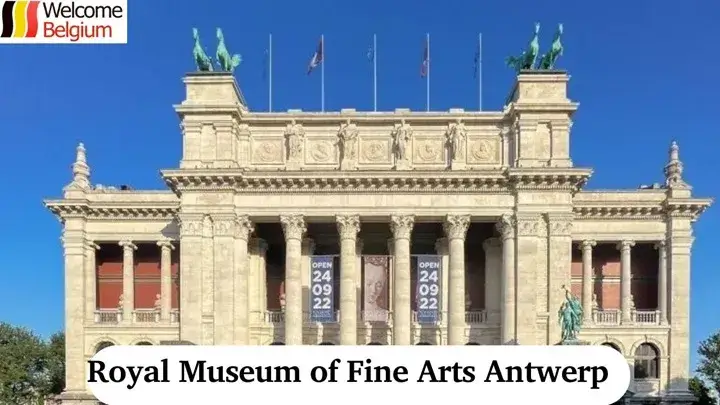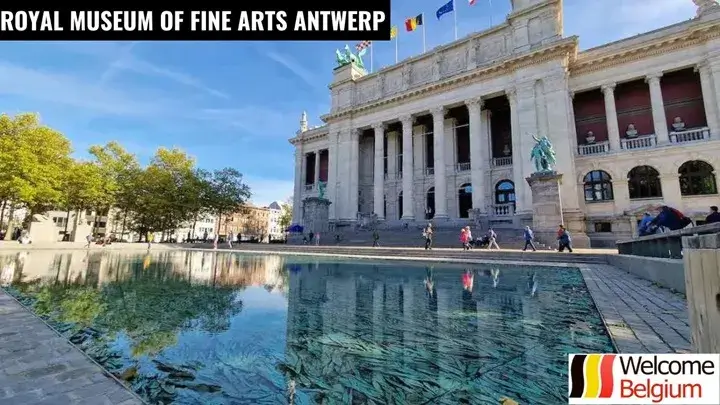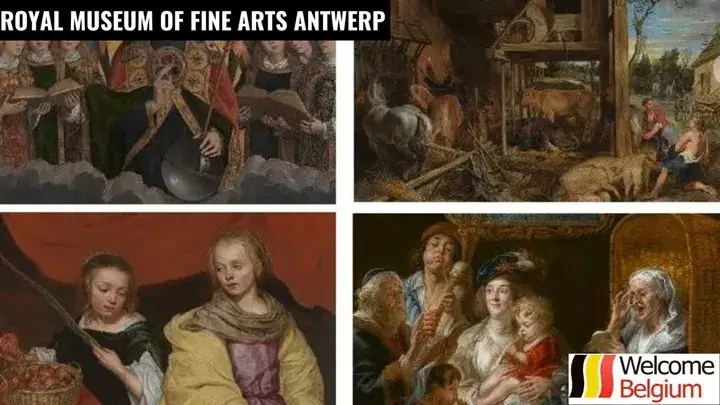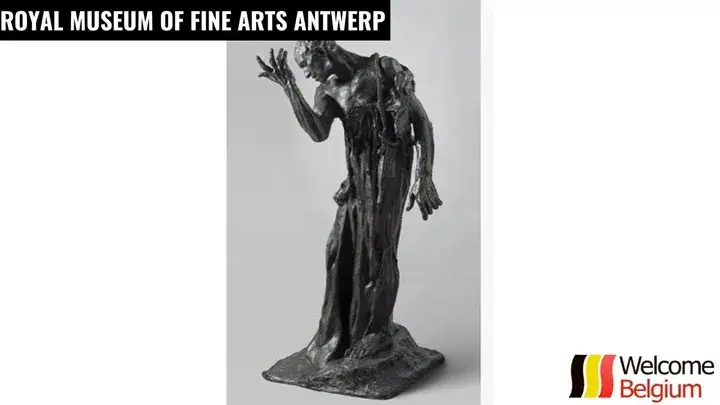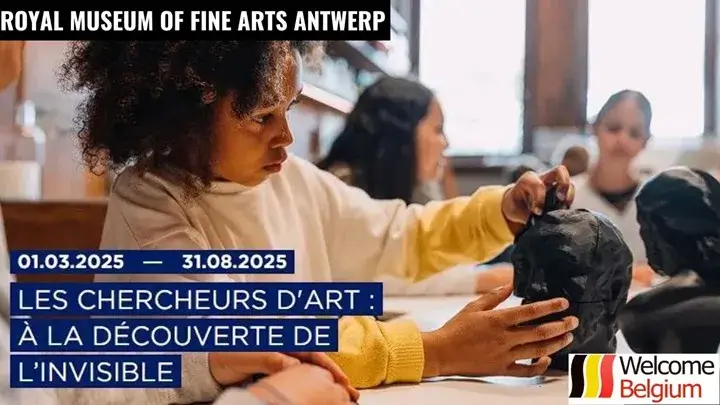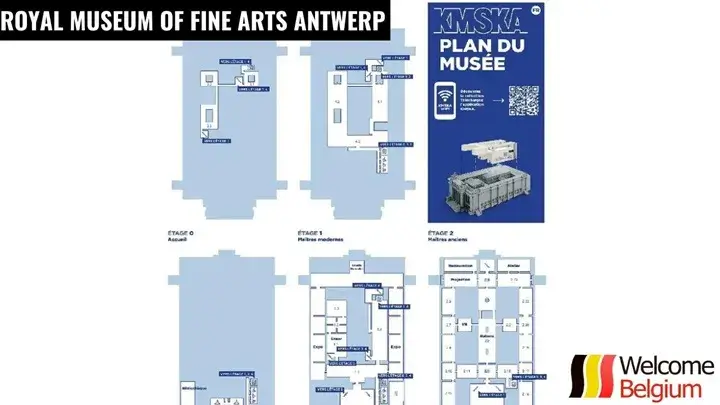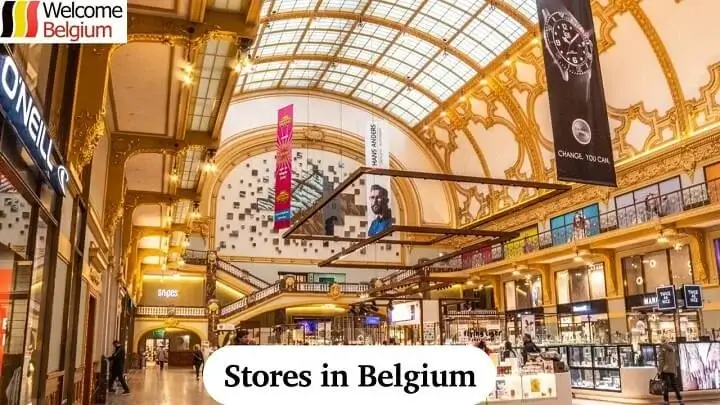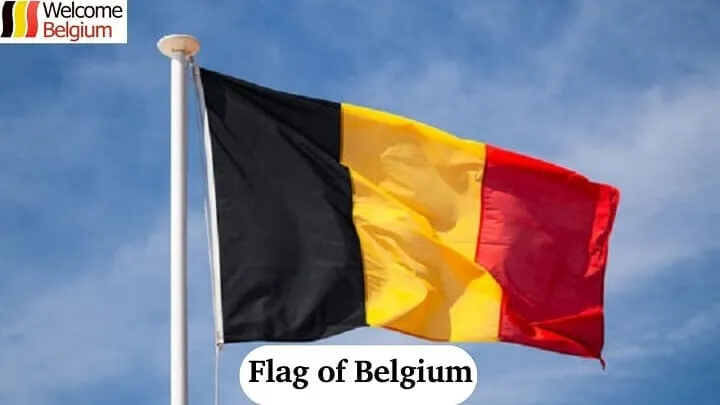Classic and contemporary art in Belgium is a multifaceted field, including paintings, sculptures and installations. If you want to immerse yourself in this amazing world, visit the Royal Museum of Fine Arts in Antwerp. This place is a collection of famous artists of the country, from the Middle Ages to modern times. Before visiting, we recommend familiarizing yourself with the collections, find out which artists are represented there.
History of the creation of the museum
He Koninklijk Museum Schone Kunsten Antwerp is one of the largest in Belgium. Its collection is dedicated to national art, including masterpieces of other European art schools. The history is closely connected with the Antwerp painters’ guild, founded in 1382. This was done by decree of the city magistrate. In 1442, the association of painters, sculptors, goldsmiths and craftsmen was officially recognized under the name of the Guild of St. Luke. It received all the rights granted to other guilds. For two centuries, the guild was located in various buildings in the city, until in 1664 it found its permanent place on the stock exchange, where the newly created Academy of Fine Arts was also located.
From the Academy’s founding until its dissolution in 1773 by order of Empress Maria Theresa, members of the guild were required to donate their works to the Academy. Many of these works today form a significant part of the museum’s collection.
During the French occupation in 1794, most of the paintings were removed from the premises of the Guild of Saint Luke. They were later sent to France. After secularization in 1797, 328 paintings were collected in the former Carmelite monastery. This place in 1843 became the basis for the formation of the collection of the future Royal Museum of Fine Arts in Antwerp.
In 1841, the philanthropist and mayor Florent van Ertborm donated 141 paintings, making the largest contribution to the collection. In 1880, on behalf of Leopold de Waele, the architects F. van Dyck and I. Windens designed a new building for the museum, where it is still located today.
Interestingly, most of the paintings are gifts from patrons and artists.
Classical works
Most of the exhibitions are devoted to classical art. These include painting and sculpture. You can see original works by Rubens, Ensor, Frans Floris. These are works by authors from the Middle Ages and the Renaissance. On the official website of the Royal Museum of Fine Arts in Antwerp, you can find out the history of each painting and how it came to be in the collection.
Painting
The paintings are displayed in several halls, which are dedicated to different artists. The exception is Rubens’ works. Separate rooms are allocated for them. In addition to the title, author and year of writing, each work has a short description of its creation. You can ask the guide for details on how this painting ended up in the museum. Most of the works are devoted to religious themes. But there are works describing the life of ordinary citizens and the aristocracy.
Popular Belgian and European Art, Description:
- Adoration of the Magi, Rubens, 1624–25 Joseph and Mary present the infant Jesus to the three wise men in an open stable, a scene described in the Gospel of Matthew (2:1–12). The text mentions only their gifts, and the names and images of the kings are a later tradition. In this painting, the man in white holding the incense is Gaspar. Behind him is Balthasar, holding myrrh in his right hand, and in front on the left is Melchior, the eldest of the Magi, holding gold and looking at the viewer. Servants, soldiers, and two men on a camel can be seen in the background.
- The Oyster Lover, Ensor, 1882. The artist’s work shows a rich lady’s feast, the main dish of which is oysters. The painting was donated to the museum by Albin Lambottom in 1927.
- Altar of the Carpenters’ Guild, Quinten Massys, 1511 It occupied a central place in the church of the Antwerp carpenters’ quarter. The altarpiece came into the collection in 1810, when there was an active recruitment after the dissolution of the workers’ and trade guilds of Belgium.
Before visiting, we recommend that you find out the exact schedule of the museum and each exhibition separately. Some of the paintings may be in storage or undergoing restoration. In addition to the works described, you can see the “Paris Sphinx”, “Madonna surrounded by seraphim and cherubim”, “Saint Barbara”, “The Fall of the Rebellious Angels”.
Important: Photography and video recording in the Royal Museum of Fine Arts in Antwerp is only permitted after approval by the administration.
Sculptures
Pierre de Wissant is one of the central figures in the sculpture composition “The Bourgeois of Calais”. In his image, Rodin conveyed a deep inner struggle and despair. This is reflected in the exhausted pose, gestures. They express hopelessness, and heavy, as if petrified hands, with a rough, uneven surface. This sculpture shows the expressiveness inherent in Rodin’s works. Working on the image of Pierre de Wissant, Rodin began with a nude model and conducted many preliminary studies, paying attention to details – such as arms, hands and head.
The sculpture was commissioned by the city of Calais for a memorial to commemorate the events of the Hundred Years’ War. Rodin created twelve sculptural groups in his studio, which now adorn the collections of museums around the world. However, the statue of Pierre de Wissan is special, because it was created by special order of the Royal Museum of Fine Arts of Antwerp.
The Antwerp Museum had shown interest in Pierre de Wissant’s bronze sculpture when the plaster original was first exhibited at the Brussels Salon in 1903. In 1907, an agreement was concluded between the museum and Rodin, and already in early 1908 the sculptor presented a plaster copy to the Fondation National de Wissant in Brussels, from where the bronze version was cast. This bronze sculpture was first exhibited at the Antwerp Triennial in 1908, and then took its permanent place in the museum’s collection.
Interestingly: the sculpture was initially completely naked. Later, Rodin “dressed” it in a shirt.
Exhibitions and events
The modern Royal Museum of Fine Arts in Antwerp is not only paintings and sculptures by famous authors. To popularize it, the administration holds thematic exhibitions and events. You can find out the dates and topics on the official website of the museum. Visiting these events will allow you to better understand the trends of modern art, and new artists will share their work with other people.
What events are recommended to attend:
- Ensor, Bizarre Dreams. Beyond Impressionism, 28/09/2024 to 19/01/2025. Provides a comprehensive overview of the work of James Ensor, highlighting his role as an innovator in art. Ensor’s works, collected from around the world, are displayed alongside masterpieces by the distinguished international artists with whom he sought to compete. Ensor always aspired to be recognized as the best, no matter who stood before him in the creative competition – be it Edouard Manet or Edvard Munch.
- Art researchers, revealing the invisible, from 01.03.2025 to 31.08.2025. Not everything is as simple as it seems at first glance at KMSKA: behind the exhibits of the collection there are hidden secrets that are not obvious. These mysteries, sometimes visible to the naked eye, and sometimes hidden deep, can only be revealed with the help of advanced technologies. Every day, our detective researchers, armed with ultraviolet lamps, microscopes and scanners, meticulously study the smallest cracks and hidden damage to penetrate the most intimate secrets of works of art.
- Jules Schmalzigau, Futurism, from 28.09.2024 to 12.01.2025. Jules Schmalzigau was a key figure in the development of Belgian modernism. He is credited with creating the first abstract oil painting in the history of Belgian art. As the first Belgian avant-garde artist to penetrate the very essence of Italian and international Futurism, Schmalzigau has taken his place among the three great masters of modern painting, alongside such outstanding artists as James Ensor and Rik Wouters.
This is a brief plan of events carried out in 2024-2025 by the Royal Museum of Fine Arts in Antwerp. In addition, the administration is planning traveling exhibitions, exchange of funds with other museums in Europe and the world. You can find out about this on the official website or subscribe to the mailing list.
Important: You can purchase individual or group tickets to exhibitions on the museum’s website.
Directions, ticket prices and opening hours
The museum is located at Leopold de Waelplaats 1, 2000 Antwerpen, in the city center. You can get there by bus on routes 14, 72 and 764. Tram #1 also runs. The trip by car from the city center will take 15-20 minutes depending on your location. You can take a taxi. But we recommend walking to the Royal Museum of Fine Arts, having seen the sights of Antwerp.
Useful information for tourists and independent travelers:
- Opening hours: Monday, Tuesday, Wednesday and Friday from 10:00 to 17:00.
- Tickets cost 20 Euro for adults and 10 Euro for visitors aged 18 to 26. Children are admitted free.
- The infrastructure is designed for people in wheelchairs.
- It is not allowed to drink or eat in the museum. For this purpose, we recommend booking a table at a local restaurant.
- You can order an individual or group excursion.
- Contact phone number: +32 3 224 73 00.
- Official website of the Royal Museum of Fine Arts – https://kmska.be/.
For a comfortable viewing of exhibits and paintings, it is recommended to install a special application on your smartphone. In addition to a full description of the collection, it records your geolocation, which simplifies planning.

